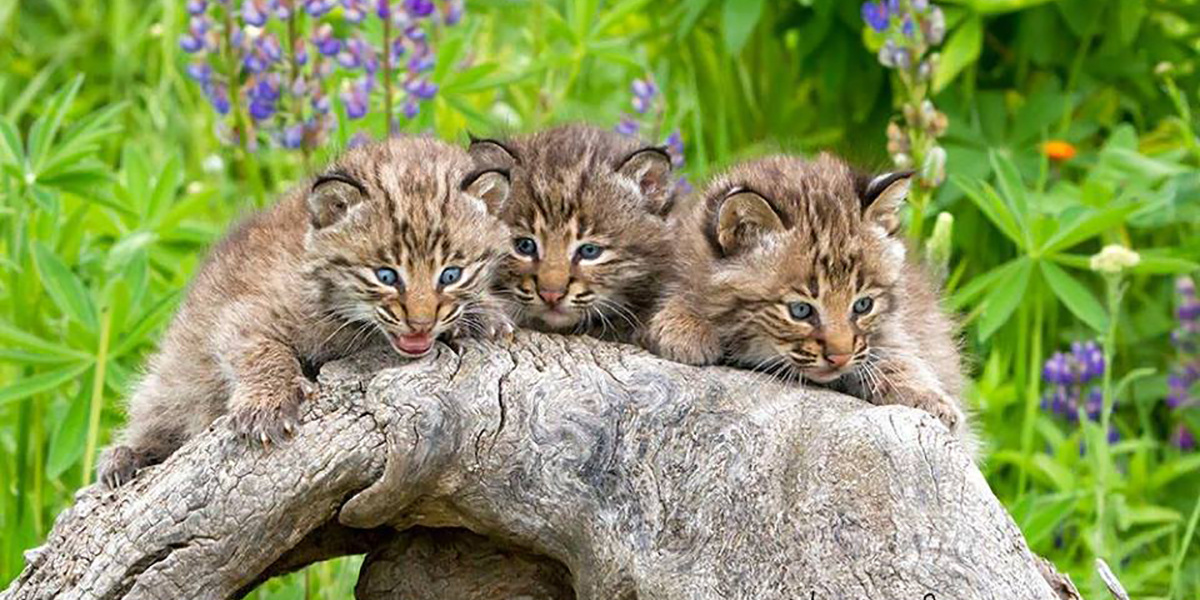

Environmental activists, science educators and the Athens Ohio City Council are teaming up against a controversial new proposal by the Ohio Department of Natural Resources Division of Wildlife (ODNRDOW) to open a bobcat trapping season in the southeastern part of the state, The New Political reported Wednesday.
The Athens City Council passed a resolution opposing the measure Monday night, citing concerns that bobcats were taken off the state’s threatened and endangered species list less than four years ago and that not enough research has been done to determine if the newly-growing populations can sustain a trapping season, according to a copy of the resolution obtained by EcoWatch. The city council also looked to prevent similar proposals in the future, urging “the State of Ohio to declare the bobcat a protected species and ban all hunting and trapping of this wonderful animal for all Ohioans now and in the future.”
The resolution notes that bobcats do not overpopulate.
“I like the idea that there’s wild animals in the woods,” Athens City Councilman Jeff Risner told The Post. “They’re worth more to me alive than they are dead.”
The resolution further notes that the trapping proposal contradicts the ODNRDOW’s own research plans.
In an October 2017 report, the department wrote, “Little is known about the density and distribution of bobcats in Ohio, as well as the population trajectory, and which areas act as source populations. Such information is critical before decisions are taken on opening a trapping season and the maximum yearly take.”
The ODNR entered into a contract with the Ohio University in August 2017 to conduct such a study, which will take four years to complete.
“So why the rush and sudden turn-around??,” Heather Cantino, an environmental educator and vice chair of the Buckeye Forest Council board who drafted the council resolution, asked in The Athens’ News Readers Forum. “Politics and pressure from the Ohio Trappers Association seem to be trumping the DOW’s own recent science-based plan to protect Ohio’s top native predator species,” she wrote.
Chapter 1501:31-16 of the Ohio Revised Code values a bobcat at $500.
Bobcats are making a comeback in Ohio—there were 499 verified sightings in 2017, The Columbia Dispatch reported. “We’re confident the population is secure,” ODNR wildlife management and research executive administrator Mike Reynolds told The Dispatch.
The proposed trapping season would last from November 2018 to January 2019 and end once a maximum of 40 bobcats are trapped in the east and 20 in the south, where Athens is located, The Dispatch reported.
But Cantino pointed out that each verified sighting does not necessarily correspond to a different animal and that the increase in sightings might be due to the increase in trail cameras installed in the past years, which the ODNRDOW itself suggested in its Ohio Bobcat Management Plan. Further, she expressed concerns that the hunting licenses themselves will be unlimited and sell for $5, meaning hunters might go over the proposed quota before the state can enforce it. Finally, not enough research has been done to determine if the quota amounts are really safe for the existing populations.
Assistant professor of conservation biology at Ohio University and the lead researcher on the bobcat study told The Dispatch he did not yet have enough information to make that call.
“I would love to have a solid answer, but it’s a tough question,” Popescu told The Dispatch.
Public outcry by individuals like Cantino and groups like Save Ohio Bobcats II has persuaded the ODNRDOW to extend the online commenting period until March 31 and push back the dates planned for the public hearing and vote. The Ohio Wildlife Council, a board of 8 that decides all ONDRDOW proposals, will hold a public meeting on April 11 and vote on May 9.
In her letter, Cantino pointed out that the council is composed entirely of sportspeople and does not have a biologist, though one member is a veterinarian.
“Only a massive outcry will defeat this dangerous, greedy, and ill-considered plan,” she wrote.

 233k
233k  41k
41k  Subscribe
Subscribe 